Danger, geek stuff ahead as I share a little story from last week…
Recently, on my occasional foray into our local charity shop I saw something mysterious. I’m not much of a shopper but before I was even certain as to what this fellow was, I was pretty sure I needed to possess it. Knowing nothing about this entire class of antiquity, I also had no idea what a good price would be but I knew that the listed amount would be worth my entertainment. The tag asked for about the price of a decent dinner out in small town rural New Mexico. And they say it goes to a charity, right?

I find about one thing per year in this store that actually piques my interest. This slightly battered black box was pushed back on a bottom shelf mixed in with some old-style slide projectors and video recorders. I thought maybe it was a film camera or possibly a projector. Whatever it was, the case appeared to be from a better era of construction, and judging by the battered handle and nicks in the covering, it was well-loved and was much carried around. The fact it had a key and functioning lock gave me hope.
So What Is It? A Clockwork Ipod? An Early Laptop?
Some of you savvy collector-types who know antiques probably spotted it for what it is immediately.
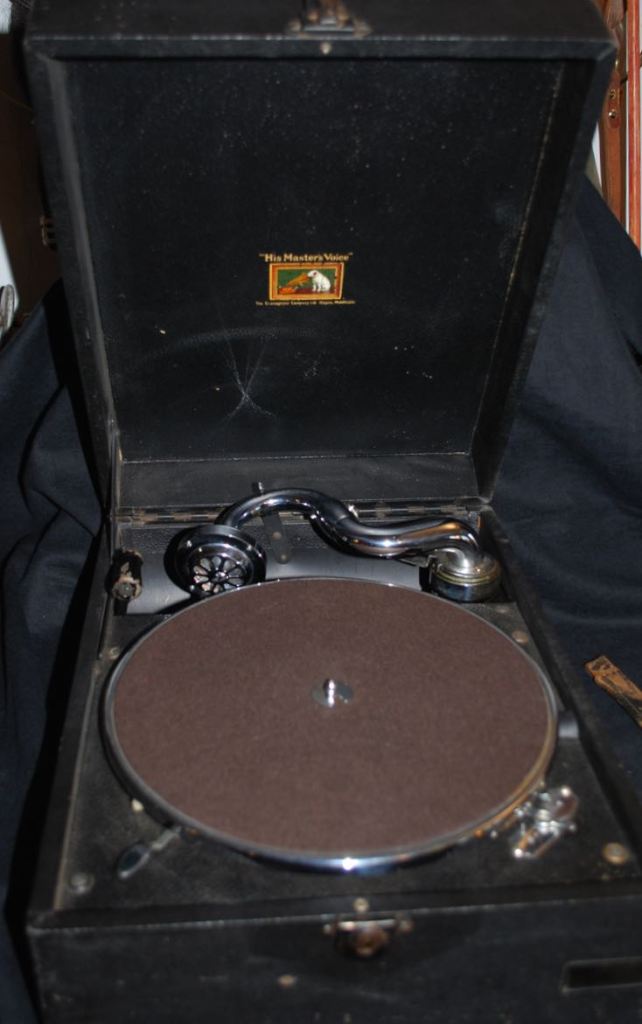
Opening it up, I was excited to see it was a 78 RPM gramophone. I honestly had very little hope that this thing would work or that all the parts would even be present much less in working order. My experience is that thrift store patrons are a rough lot whose goal it is to disassemble and loot as much of the merchandise as possible; merely for the entertainment. Nevertheless, I was intrigued.
I honestly had no experience with this sort of contraption but, lacking any sort of electrical motor or plug, and having a crank handle stowed inside, I quickly deduced that this was an escapement clockwork mechanism. The moving parts still moved. The solid bits remained solid. Better yet, there was a small, hand-written note inside reading: “We purchased this in England in the 1930s. Brought it over here in 1970.”
Only this, and nothing more.
Under the watchful glare of the shop attendant, I examined every part, figured out what moved where, felt out the spring by cranking it up, testing the stop and start mechanism, fondled the styluses, and generally examined this little beast like a dairy cow at a county fair. No part went untouched, if you know what I mean.

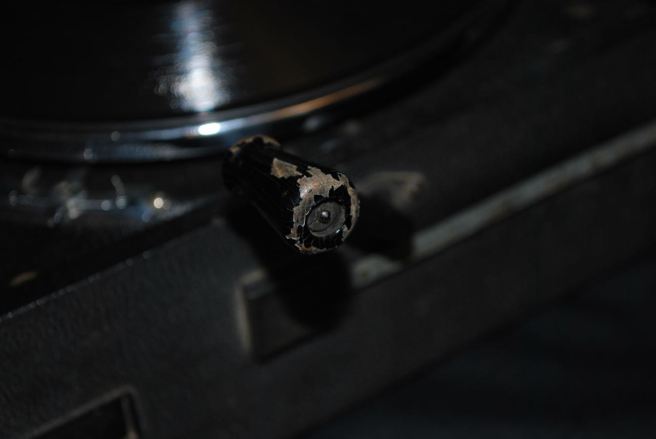
Cranking it for the first time, I felt for any oddity in turning. It felt smooth and tightened slowly. I had no idea if it should turn five or one hundred times.

I inserted a needle and brushing it with my finger I could tell it had plenty of sound. There’s some use for calloused skin I suppose.


I think they used to make some good stuff in England.

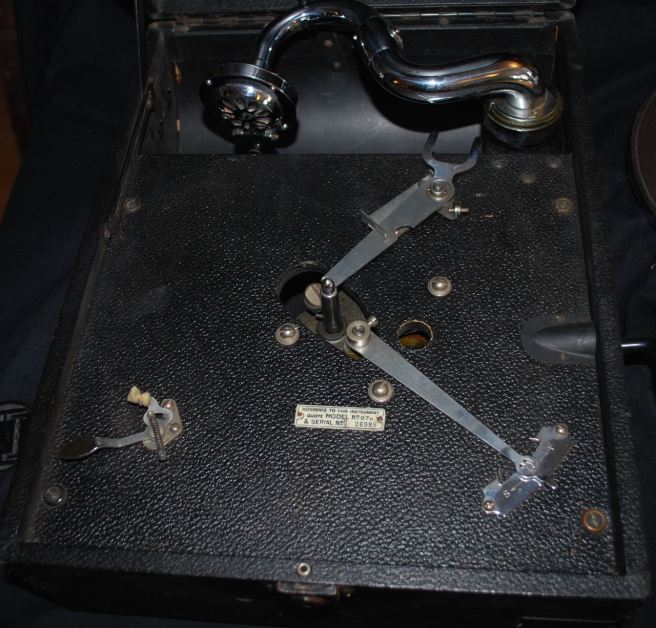
Being, in the words of Shakespeare, one of those people known as the rude mechanicals, I was able to figure out the basic functions of the machine with just a little experimentation. They were spectacular. Appealing to my somewhat Luddite, but also slightly retro-futuristic aesthetic, I desired to possess this creature. It turned when cranked. The stop mechanism stopped. It had all the right parts (I thought). It was a beauty to behold.
However…
I decided, in accordance with my Minimalizing lifestyle, to close it up, put it back on the shelf, and walk away… I issued the nolle prosequi for the moment. I let that train sail from the station. If it was still there in two weeks, I would reconsider.

I thought long and hard about this. It was nearly perfect.
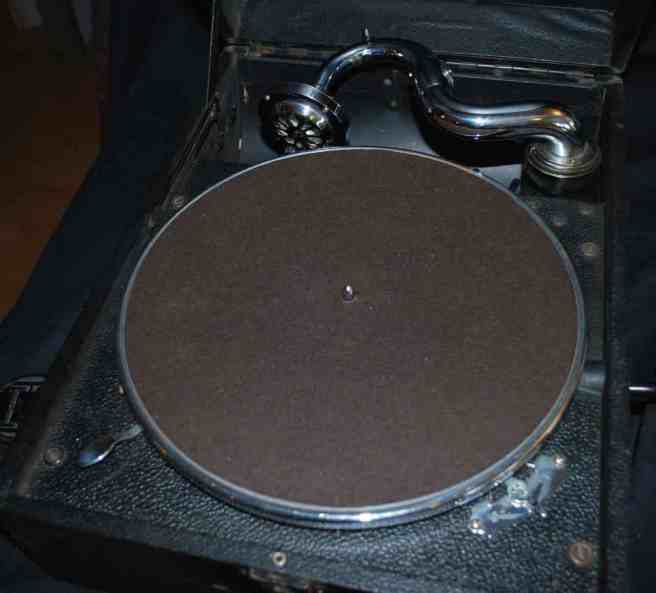
Not long ago, I would have snatched it up just because it was fun and cheap; even just as a novelty. Nowadays, I don’t make purchases without a lot of consideration. Do I need this? Not really. Do I think it will bring some pleasure? Hell yeah. Is it expensive? Not really. In fact, I partially justified it to myself that I could always re-sell it on Ebay, at more than ten times the asking price judging by others I found online. So, of course,
I bought it.
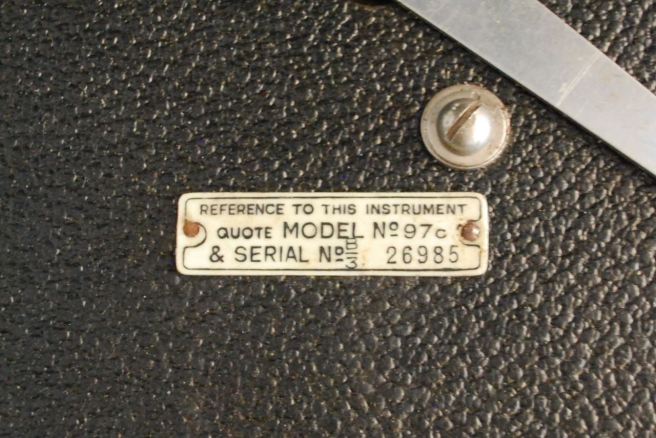
A little Internet research taught me a lot about this type of instrument. Here’s some model-specific information I came up with:
HMV Model 97c – The “c” is a year designation for the 1939 model although one collector site thought it might be a 1938 model. This makes little difference to me as it’s still 76 years old. The Model 97 was designed as a cheaper alternative to the ever popular HMV Model 102 costing £2-£3 in the mid 1930’s compared to the £5-£6 price-tag of the 102 (I’m told this is about £395.00 and £795.00 in today’s economy). It has a 10” turntable, HMV No.21 sound box, automatic and manual brakes, a pivoted front corner needle bin and it originally came with a record carrying tray (now sadly missing). It is finished in a black Rexine® (fabric comprised of cellulose nitrate, camphor oil, pigment, and alcohol, embossed to look like leather) cloth-covered case with a steel-reinforced leather handle.

Of course, I remember 78s being around in my elder’s record collections as a kid but I am definitely of the age of vinyl and now electrons in some sort of cloud. Fortunately, there are loads of reasonably priced 78 RPM records and replacement needles out there so providing some sustenance for the HMV was for me, but the work of a moment (and an exercise in PayPal). Here’s a rather dull video I made of the little box in action (my first YouTube upload) just to show how well it works.
Pulling the arm out to the right kick-starts the motor by unlocking the turntable, and it stops by triggering the lock again as the arm reaches the inner radius. Needles need to be replaced after every use so there is a small expense involved. The little box is remarkably loud and the old adage from the Victrola era “put a sock in it” rings true unless you happen to be hosting a dance. I understand that these were popular for picnics and outdoor soirées as they made plenty of noise and required no external power. A sort of boom box of their day. Anyone having unwanted 78s lying around feeling neglected can send them my way as I think this will be a novel little device for the long winter evenings in the Vardo.

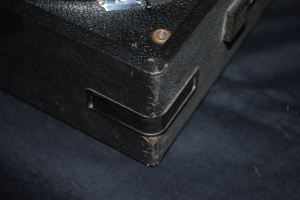
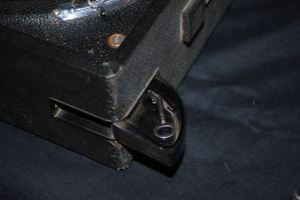
That there be treasure. Nice score and write up.
Thanks Jim. Late night ramblings with a new and completely unnecessary toy. I love it.
Spectacular find!!! Kind of surprised you were able to hold out so long and so happy it was still there when you returned.